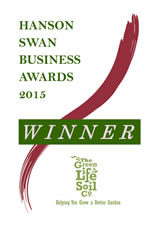| item(s), Total: $0.00 View Cart |
| Shopping cart is empty. |
In Noongar culture, June is the start of Makuru season - the winter, when first rains begin and the cold weather and westerly winds come. Traditionally, as rainfall brought fresh water to inland creeks and waterways, the people would move away from the coast to hunt kangaroo, possum, and swans. Nothing was wasted - skins used for cloaks, bones, teeth and sinew used for tools and useful objects. Temporary but ingenious shelters were built to keep warm and dry. Today, for Perth gardeners, we find sunny days make it very pleasant to be gardening outdoors (even if we scurry indoors to keep warm at night) - I hope you've been taking advantage of this gorgeous weather and enjoying the mild winter sun. Apparently our April newsletter this year didn't reach everyone - my apologies! (technical glitches which still scar me emotionally as we work through it for the June edition). In that newsletter, we shared with you a little video we had made for us that talks a little bit about GLSC and our WHY as a business. So if you haven't seen it already, please have a look (and feel free to like & share via Youtube). And remember you CAN check out any previous newsletters via the archive in the newsletter tab to your left... and SEARCH for specific topics via the search box (upper left section of the web page).
Good news! We're working on a new schedule of workshops for Spring - I hope to have details up & bookings open very soon; so remember to check back in to our EVENTS page & keep in touch with us on Facebook to see more information. Planned topics include the always popular propagation, extracting essential oils, herbal teas, integrated pest management, native garden design, all about soils, low cost gardening...and more! So there's something for everyone. Keep your eyes open; all details will be published (and open for bookings) by end of this month.
Pictured: Paul & I with Josh Byrne at the Midland Town Hall for his 'Gardening Solutions for Healthy Rivers' presentation last week. In this newsletter:Jobs to do in the Garden Jobs to do in the Garden
What to Plant Now
Artichoke (globe), Beetroot, Broad Beans, Broccoli, Cabbage, Coriander, Dill, English spinach, Kale, Kohl rabi, Leek, Lettuce, Onion, Parsnip, Peas, Potatoes, Radish, Silverbeet, Snow peas, Spring onion, Strawberries, Turnips. Peas are one of the most popular winter vegies. You can grow the type you need to shell - big, plump pods! Or you can grow sugar snap peas or snow peas (which you eat pod & all). Home grown peas are extremely popular with kids - so if you have some space (bear in mind some varieties are tall, climbing plants) why not give them a go this winter? Here's a link to our fact sheet all about peas for more information. Improving your Soil - For those on clayIn last month's newsletter I had an article about how to improve Perth's sandy soils. I received a lovely email soon after it went out to say thank you very much for all the information - but what about us on clay soil?? I realise we are guilty of focusing on Perth's sandy soils - so many of our suburbs do deal with them. But for other areas, I acknowledge we do sometimes leave you out - so this month let's have a look at your issues and give you a supportive hug to help you address them. (So Pamela - this one's for you.) In the greater Perth area, there area two main types of clay soil we come across. The more common one is hills gravelly loam; and then there's the alluvial clays that tend to be around the river systems and waterways.
Sand particles are (comparatively) large and allow a lot of airflow between them - which is also why they're not great at holding water. Clay particles on the other hand are more like flattened platelets; they tend to 'stack up' on each other with little room in between; meaning they tend to compact and have less room between particles for airflow - and sometimes water too.
We know that to improve sandy soil - we add clay. So is the reverse true? Do we add sand to improve heavy clay soil? Well - yes and no!!!
It is widely recognised that adding organic matter (compost is ideal; also biochar and some aged manures) helps. Clay has the ability to hold onto nutrients, and the microbial activity promoted by the organic material will slowly help you create a more friable, loamy soil structure. So add organic matter for sure. If you want to add some coarse sand; add it at the same time as you're adding organic matter. How much compost to add? As much as you can. A layer 10cms thick per m2 is ideal. That's 100L per m2, or a good wheelbarrow load. It's a lot; depending on how "bad" your clay is you may get away with less; but as always there will be a tipping point where you're simply not using enough if you skimp - so why bother. Dig it through to spade depth or around 30cms. Biochar is great at holding water - so logically you'd think that's not a quality you'd want to add to clay; but we have found it helps moisture to evenly disperse in heavy soils by opening up the structure and by its natural capillary action. Hills gravelly loam
Gypsum
Not all clay soils will respond to gypsum. To determine whether your soil will respond, drop a piece of dry clay approx. 6mm across into a glass of water. Do not move the glass – just leave it for an hour, then 24 hours. If it slowly disperses into the water, first forming a halo around the piece, then practically dissolving, it is 'reactive clay' and will respond to the addition of gypsum. If however after 24 hours the particle has done nothing at all in the water, it won't be much help adding gypsum, as it is 'non-reactive clay'. Stick to adding organic matter (sorry). Plant selection and planting mounds Although you can eventually soften the top layers of clay with your perseverance; adding gypsum and organic matter, what about if you have very deep clay and/or hard pan underneath? Sometimes trees can get through this - provided there is deep enough topsoil for them to anchor themselves and gather water and nutrients; in time their very fine roots can penetrate the cracks of clay below and grow through it. Particularly if regular water is supplied to the roots, the underground layers of clay will soften up. Definitely deep mulch your plants. When digging a planting hole in clay soils, make it large so that there's plenty of loose soil for the plant to establish itself in - ideally at least 3 x the size of the pot the plant was originally in. Bigger - if you can manage it. Also forking holes into clay around the edges of the planting hole may provide useful little channels for roots to expand outwards.
Because clay soils don't tend to drain well, in winter soils can become waterlogged. To avoid having your precious plants drown, planting into a raised mound (anywhere between 15 - 30cms high) can mean that water can run off instead. Just watch that in summers, roots aren't left exposed to drying out too quickly. Again - deep mulch your plants. If you have large areas prone to water logging you'll really need to think about your use of the space. Obviously you can build up areas; but that will tend to push the water elsewhere. You may need to think about how water flows on your property, and look at directing it away through drainage (or directing it to places where you can make use of it - ponds or bog gardens for example). There are plants that cope with seasonal inundation - so again - plant selection is key here.
Because clay soil tends to compact easily, avoid walking or driving on your garden areas, and especially any areas prone to waterlogging. Stick to pathways instead, and use stepping stones in your beds for weeding/harvesting. Ideally make pathways out of porous material - hard surfaces will just give you more water run off to deal with. In areas you don't need to use for a while, plant a green manure crop. Any plant roots will help penetrate the surface and open up the structure; and once the crop is slashed the decaying organic matter will continue to open up the soil. The worst part of gardening on clay is definitely the way it 'sets' and is so hard to dig. Just like the people who have to work hard to improve their sandy soil; you can take the best elements of clay and make it work for you - undeniably with a bit of muscle. On the bright side; clay soils tend to hold water and nutrients really well - so they are naturally more fertile than gutless sandy soils. Successful gardening on heavy soils also comes down to appropriate plant choices. While you can grow your vegies in raised beds, Perennial plants and trees should be carefully chosen to make sure they will thrive in clay. There are plenty of choices; go and talk to your local nursery and get good advice. There will be options to suit what type of garden you're building; so go and check them out. VIP Special Offer
If you have very sandy, gutless soil, incorporating Cassies Clay is going to go a long way to permanently improve the structure and the soil's ability to retain nutrients AND moisture. If you have an area of garden you're going to be working on and/or planting out anew - we've got a great deal for you. VIP's can grab a FREE bag of Cassies Clay (standard RRP $23.95) with any purchase over $50. This is enough to intensively improve 1.5 - 2m2 (depending on how poor the base soil is). To claim your free bag mention the VIP offer in store or if placing a phone order, or if ordering online, add "VIP Cassies Clay Freebie" - or similar - in the delivery notes section of your order. Cassies Clay is kaolinite based, and is both Certified Organic and Smart Watermark Approved/Waterwise endorsed. It is fabulous to use in conjunction with Charlie Charcoal to permanently change the structure of your soil. Valid one per customer until COB 30.6.19. Currently our stock is in plain bags - labeling is on its way. Photo CompetitionTHANK YOU to those who sent in pictures of their gardens recently. It's wonderful to see you're getting your hands dirty and enjoying it. This month, I've chosen Sally, who sent in these photos a couple of weeks apart, and she's got a clever recycling tip too, which might help protect your precious young seedlings from being eaten. Hi Linda, Paul & team Thank you Sally for sending in your photos. You've won a $50 voucher to use with us @ GLSC. We look forward to seeing you soon!
Retailer Stockist Update
|

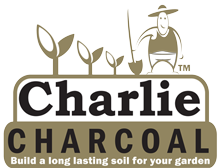

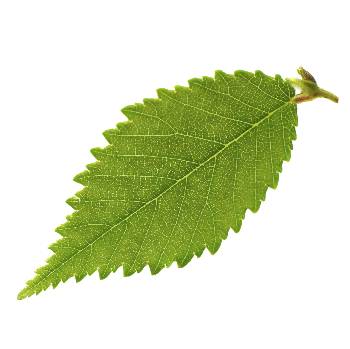 Welcome to winter! Temperatures are definitely a bit chilly overnight (we've had several frosts up our way already); sadly due to lack of cloud cover and rain overnight. With only (as I write this) 17.8mm of rain recorded for this May, we're down on last year's May (67.4mm) and the 'new average' 88.7mm and even scarier if you compare it to the 'old average' 116.9mm. [New average means records from 1994 - 2017 while old average means records 1876 - 2016.]
Welcome to winter! Temperatures are definitely a bit chilly overnight (we've had several frosts up our way already); sadly due to lack of cloud cover and rain overnight. With only (as I write this) 17.8mm of rain recorded for this May, we're down on last year's May (67.4mm) and the 'new average' 88.7mm and even scarier if you compare it to the 'old average' 116.9mm. [New average means records from 1994 - 2017 while old average means records 1876 - 2016.] 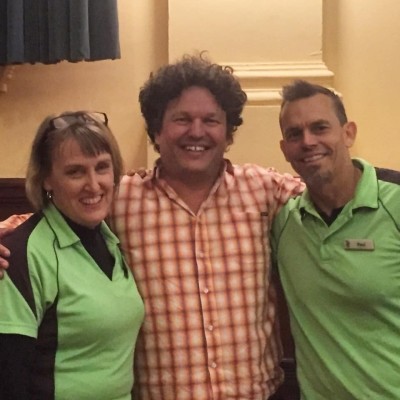 So until next time - stay warm, and enjoy your Winter garden.
So until next time - stay warm, and enjoy your Winter garden. Weed! Growth of winter weeds has started, but with lack of rain they haven’t exploded yet! Keep on top of them, add the greens to your compost, and MULCH bare soil to protect it from more weeds growing. Check out our
Weed! Growth of winter weeds has started, but with lack of rain they haven’t exploded yet! Keep on top of them, add the greens to your compost, and MULCH bare soil to protect it from more weeds growing. Check out our 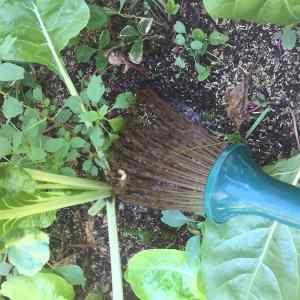 root ball as possible from the plant’s original position and re-plant immediately. Seasol/kelp products are recognised to help with transplant shock, but other than this – don’t add additional fertiliser. Keep an eye on soil moisture (which shouldn’t be too much of an issue in winter) but wait until new growth emerges & fertilise once the weather warms up. Be aware some plants don’t transplant well (some natives in particular) – but if a plant is simply in the wrong spot & you’re wanting it gone regardless, it’s always worth a shot to move it.
root ball as possible from the plant’s original position and re-plant immediately. Seasol/kelp products are recognised to help with transplant shock, but other than this – don’t add additional fertiliser. Keep an eye on soil moisture (which shouldn’t be too much of an issue in winter) but wait until new growth emerges & fertilise once the weather warms up. Be aware some plants don’t transplant well (some natives in particular) – but if a plant is simply in the wrong spot & you’re wanting it gone regardless, it’s always worth a shot to move it.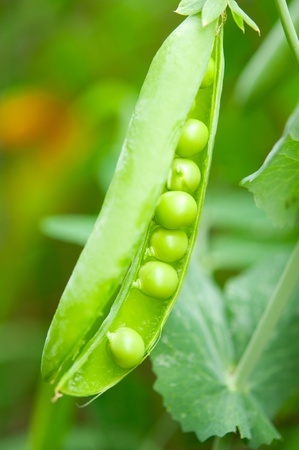 Still lots of gorgeous Winter/Spring vegies (and herbs) you can plant now - for the full list, check out our free
Still lots of gorgeous Winter/Spring vegies (and herbs) you can plant now - for the full list, check out our free 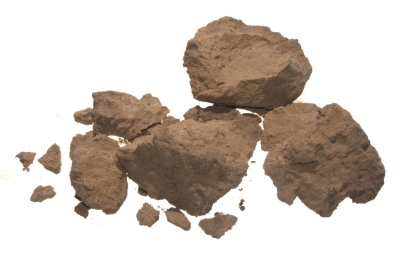 A little test to check out the content of clay in your soil is to moisten a handful, and squeeze it tightly in your hand. When you open up your hand, if the sample falls apart; you have very little clay content. If it tends to clump together, you have clay. If it feels quite gritty - you still have a fair amount of sand in the mix; if it tends to be smooth and sticky - you have heavier clay soil. Ideally the clay shouldn't stick together completely in a tight ball - this indicates the structure is too closed (and doesn't allow enough air in the soil) and will be prone to compaction.
A little test to check out the content of clay in your soil is to moisten a handful, and squeeze it tightly in your hand. When you open up your hand, if the sample falls apart; you have very little clay content. If it tends to clump together, you have clay. If it feels quite gritty - you still have a fair amount of sand in the mix; if it tends to be smooth and sticky - you have heavier clay soil. Ideally the clay shouldn't stick together completely in a tight ball - this indicates the structure is too closed (and doesn't allow enough air in the soil) and will be prone to compaction.  So basically - we need to 'open up' clay soil. Unfortunately digging in clay over the summer months is virtually impossible as it sets hard like concrete; and it is only a teensy bit easier to work at other times of the year. Autumn is usually a good time to try - once there's been a little bit of rain to help soften the surface and not too much to completely water log it. If you do need to dig dry clay, pre-soaking it with a hose little by little as you chip through the layers might help! Definitely if you have heavy soil it pays to invest in a mattock and possibly a crow bar. (People on sandy soil will be laughing right about now.) Unfortunately it is HARD WORK. Hiring equipment like post hole diggers and rotary hoes may be beneficial for major projects. Ripping apart soil is not something you want to do every year; obviously existing plant roots will be damaged, and it doesn't do much good to soil biology either. But providing you're adding the micro-biologically rich organic material back into the soil it isn't the end of the world. Try to avoid heavy digging in very wet clay soil if you can.
So basically - we need to 'open up' clay soil. Unfortunately digging in clay over the summer months is virtually impossible as it sets hard like concrete; and it is only a teensy bit easier to work at other times of the year. Autumn is usually a good time to try - once there's been a little bit of rain to help soften the surface and not too much to completely water log it. If you do need to dig dry clay, pre-soaking it with a hose little by little as you chip through the layers might help! Definitely if you have heavy soil it pays to invest in a mattock and possibly a crow bar. (People on sandy soil will be laughing right about now.) Unfortunately it is HARD WORK. Hiring equipment like post hole diggers and rotary hoes may be beneficial for major projects. Ripping apart soil is not something you want to do every year; obviously existing plant roots will be damaged, and it doesn't do much good to soil biology either. But providing you're adding the micro-biologically rich organic material back into the soil it isn't the end of the world. Try to avoid heavy digging in very wet clay soil if you can. 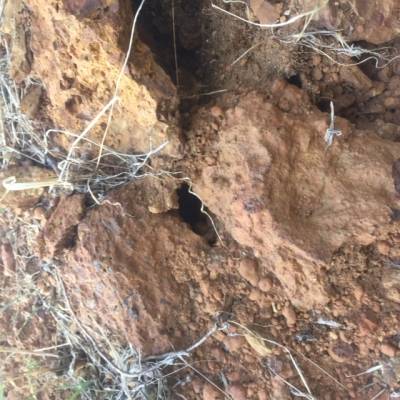 Definitely incorporating coarse sand into fine clay will help change the soil structure; but it can be difficult to work the sand in. You may get the 'breadcrumb effect' where sand simply coats sticky lumps of clay. So obviously there's a bit of work involved and a technique to find to get the two elements to work together. Sprinkling and chopping through with a spade or fork adding a little at a time is better than dumping a whole load of sand on top then trying to work it in. Don't add fine sand - it won't be as effective. There will be a sweet spot for how damp or dry your clay is too; before adding any sand. As a general rule as dry as you can manage to work it is what you should aim for.
Definitely incorporating coarse sand into fine clay will help change the soil structure; but it can be difficult to work the sand in. You may get the 'breadcrumb effect' where sand simply coats sticky lumps of clay. So obviously there's a bit of work involved and a technique to find to get the two elements to work together. Sprinkling and chopping through with a spade or fork adding a little at a time is better than dumping a whole load of sand on top then trying to work it in. Don't add fine sand - it won't be as effective. There will be a sweet spot for how damp or dry your clay is too; before adding any sand. As a general rule as dry as you can manage to work it is what you should aim for. 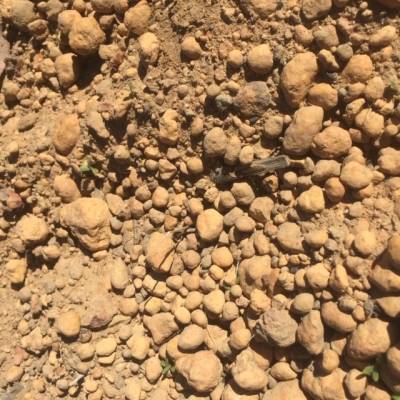 While hills gravel can be difficult to dig, and it does vary from region to region (sometimes all on the one property!) - it is usually not too bad for growing in. Obviously there is a whole range of native plants to choose from that will do well in these soils; and given that many orchards are based in hills suburbs, that might give you a clue that fruit trees don't mind growing in gravelly clay. Our testing has shown these soils usually lack calcium, so adding gypsum (or lime of the soils are acidic) can help with this. Rock minerals (rock dust) are definitely beneficial, too, by supplying a range of trace elements.
While hills gravel can be difficult to dig, and it does vary from region to region (sometimes all on the one property!) - it is usually not too bad for growing in. Obviously there is a whole range of native plants to choose from that will do well in these soils; and given that many orchards are based in hills suburbs, that might give you a clue that fruit trees don't mind growing in gravelly clay. Our testing has shown these soils usually lack calcium, so adding gypsum (or lime of the soils are acidic) can help with this. Rock minerals (rock dust) are definitely beneficial, too, by supplying a range of trace elements.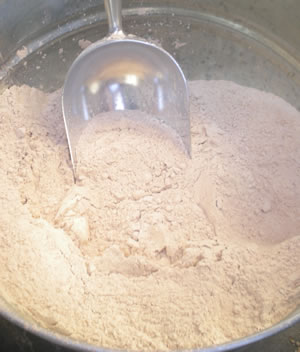 Gypsum is a naturally occurring mineral that is often used to help 'break up' clay soil. Otherwise known as hydrated calcium sulphate, Gypsum occurs as a saline evaporite mineral from ancient watercourses (similar to limestone). It is a major industrial mineral used in products from paper to paint, and also as a food additive.
Gypsum is a naturally occurring mineral that is often used to help 'break up' clay soil. Otherwise known as hydrated calcium sulphate, Gypsum occurs as a saline evaporite mineral from ancient watercourses (similar to limestone). It is a major industrial mineral used in products from paper to paint, and also as a food additive.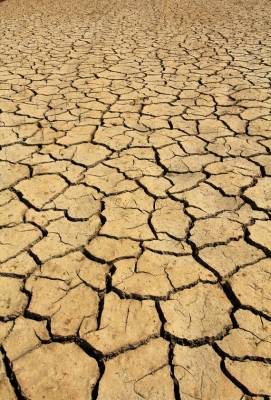 Sometimes if there's a hard pan of clay underneath your topsoil things simply can't get their roots deep enough to survive. Trees can start of well for a year or two then drop dead very quickly once they hit it (the same thing happens with cap rock underground, too). Your only solution here is to change your plant selection; dig a VERY big hole (backhoe, anyone?) or to mound up your soil. Raised beds or large pots can be a solution too.
Sometimes if there's a hard pan of clay underneath your topsoil things simply can't get their roots deep enough to survive. Trees can start of well for a year or two then drop dead very quickly once they hit it (the same thing happens with cap rock underground, too). Your only solution here is to change your plant selection; dig a VERY big hole (backhoe, anyone?) or to mound up your soil. Raised beds or large pots can be a solution too.  Mulch has benefits for all types of soil; feeding up microbes and adding valuable organic matter that will help to keep the top layers of your clay soil soft and easier to dig. Use something economical like recycled tree prunings (pictured here) and add a layer 10 - 15cms thick. You'll be surprised what you find underneath in a year or two - SOIL! (Tip - throw some gypsum down first & let the worms & soil life do the work for you!)
Mulch has benefits for all types of soil; feeding up microbes and adding valuable organic matter that will help to keep the top layers of your clay soil soft and easier to dig. Use something economical like recycled tree prunings (pictured here) and add a layer 10 - 15cms thick. You'll be surprised what you find underneath in a year or two - SOIL! (Tip - throw some gypsum down first & let the worms & soil life do the work for you!)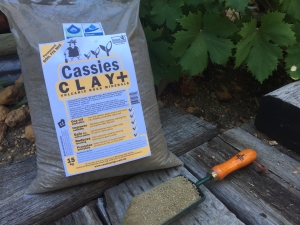 Winter is a great time to improve the water holding ability of your soil in readiness for the summer to come.
Winter is a great time to improve the water holding ability of your soil in readiness for the summer to come. 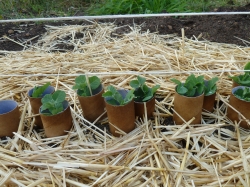
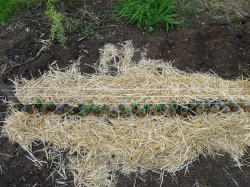

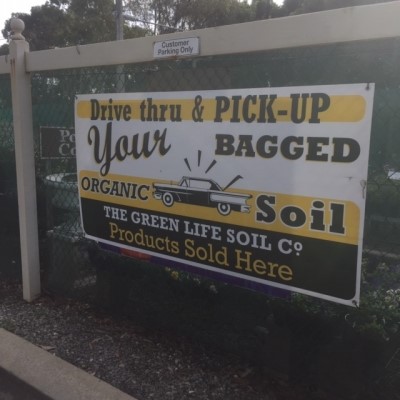 Looking for Green Life goodies closer to home? Check out our list of independent stockists. Please support these businesses who support us! You'll get great advice & local knowledge as a bonus.
Looking for Green Life goodies closer to home? Check out our list of independent stockists. Please support these businesses who support us! You'll get great advice & local knowledge as a bonus.







